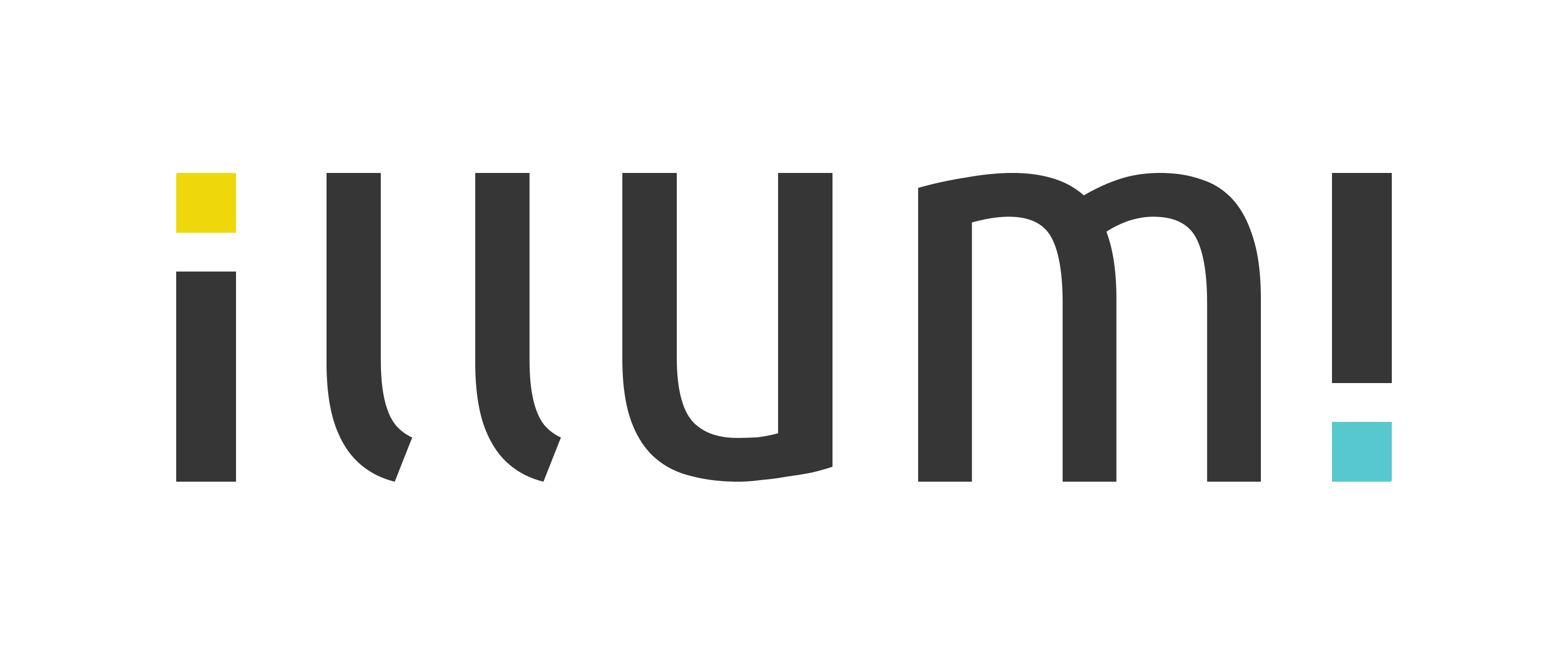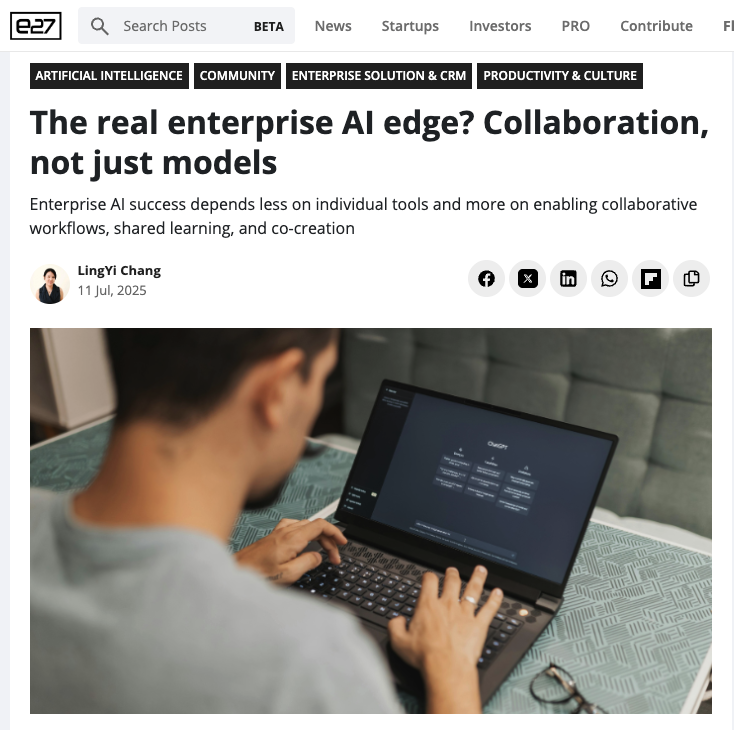At a recent talk, the host asked me: “With ChatGPT and similar tools so dominant in the consumer space, what’s the real story when it comes to enterprise AI?”
It’s a timely question—and one with a deceptively simple answer. You can have the best AI models in the world, but if you don’t get collaboration right, it will still be hard to unlock true enterprise value.
Why collaboration matters even more for enterprise
If we look at the consumer landscape, individuals have rapidly embraced AI-powered chatbots and productivity apps. ChatGPT, for example, landed millions of users seemingly overnight. The narrative is one of speed, convenience, and individual empowerment. But enterprise contexts are fundamentally different. When organisations attempt to replicate the “heroic solo productivity” of consumer tools within their teams, they often run into a wall.
Why? Enterprises are complex ecosystems. People don’t work in isolation but within structured teams, governed by processes, and embedded in cultures that have developed over years—if not decades. In this environment, success is rarely crafted by lone geniuses; it is composed by collaborative groups who can adapt, learn, and build on each other’s progress.
Research consistently shows that in enterprise transformation, technology alone accounts for less than 30 per cent of project success. The rest—over 70 per cent—depends on people, processes, and culture. And at the centre of all three is the ability to collaborate.
The dangers of isolated AI tools
Let’s be honest: today’s most popular AI tools are inherently personal. They sit in our chat windows, answer our prompts, and help us draft emails that only we see. While helpful, this approach tightly restricts AI’s business value to the sum of many small, disconnected improvements.
Now imagine if every new insights, prompt, or workflow lived in a silo on just one person’s desktop. A customer service rep tinkers with a prompt that could help dozens of colleagues. A sales leader discovers a way to get competitive analysis in seconds using an AI agent—but that knowledge never leaves their device. Such isolated “AI shadow IT” not only limits organisational learning but also stalls momentum for transformative change.
Enterprise productivity is not about the fastest individual, but the most adaptive, aligned, and collaborative teams. This is where AI has the potential to become a multiplier—but only if we make collaboration the main design principle.
The collaborative AI advantage
The power of AI compounds not just when it’s distributed, but when it’s collaboratively harnessed. In our work at illumi, we see four patterns that lead successful enterprise AI adoption:
- AI for team knowledge, not just personal shortcuts: When AI tools are built to capture and improve collective knowledge—whether that’s refining prompts, sharing best practices, or surfacing frequent blind spots—organisations build a knowledge base that strengthens over time.
- Co-creation and experimentation: Innovation thrives where ideas are rough, sketchy, and up for debate. When teams are encouraged to iterate and share their AI workflows early—even if they’re ‘imperfect’—everyone learns, adapts, and improves together. In our own experience, early sharing led to workflows that improved two or three times faster compared to approaches worked on in isolation.
- AI as a facilitator, not an expert: The best AI-driven teams don’t treat the tool as an oracle, but as a springboard. Their members challenge assumptions, test hypotheses out loud, and use AI suggestions as starting points—not final answers. This open culture of curiosity leads to greater buy-in, faster learning loops, and fewer risks of “automation blind spots.”
- Transparent feedback loops: Effective enterprise AI platforms log what works—and what doesn’t—automatically. Everyone benefits from seeing the mistakes, pivots, and breakthroughs of their colleagues. This cultural transparency makes the organisation much more adaptive, which is the ultimate asset in a rapidly changing landscape.
Putting collaboration at the heart of enterprise AI
If you’re responsible for AI or digital transformation in your organisation, here’s my strongest advice: Don’t focus solely on the sophistication of the AI model or the beauty of the user interface. Instead, ask yourself:
- Does your current approach make it easy for teams to experiment together, or does it encourage working in silos?
- Are AI-driven insights and workflows easy to share, adapt, and build upon across teams?
- Does your implementation reinforce a culture of co-creation—where “rough drafts” and “work-in-progress” are celebrated as much as polished reports?
- Is your success being measured not just by tool adoption rates, but by the rate at which teams learn, iterate, and improve together?
Looking ahead, I firmly believe the next wave of enterprise AI winners will not be those who simply choose the best model, but those who engineer for collaborative intelligence. The most innovative solutions will come from diverse minds building on each other’s experiments, questioning assumptions, and sharing hard-won lessons in real time.
Final thoughts: AI is a team sport
The advancement of AI in the consumer market has been fast and impressive. But the enterprise story is just beginning—and it will not be written by AI alone. By placing collaboration at the centre of your AI strategy, you unlock your organisation’s most powerful asset: its collective intelligence.
The question isn’t whether you have access to AI, but whether your teams are empowered to work, learn, and evolve—together.





